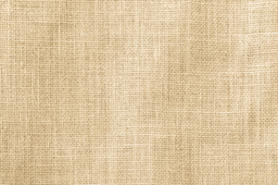No support for decking claim
The Applicant’s evidence was put to the test, writes Dale Carter. O/433/18, G & M Safe Deck Ltd v J. Mac Safety Systems Ltd, UK IPO, 17th July 2018.

O/433/18, G & M Safe Deck Ltd v J. Mac Safety Systems Ltd, UK IPO, 17th July 2018
Key points
- Soliciting evidence for use in proceedings may lead to that evidence being given little weight or discounted entirely
- If evidence supporting a claim to acquired distinctiveness is not tested with sufficient rigour it may lead to a mark being accepted that should otherwise be refused
- Watching services can be a useful tool to enable an early objection to be raised where it appears that a third party may be granted an unjustified trade mark monopoly
In 2016, G&M Safe Deck Ltd (the Applicant) applied to register a pure-colour mark for “Safety platform decking made of High-density polyethylene (HDPE), all for use in the house building industry” in class 19. The application included an acceptable claim to the colour Orange, Pantone 1595C.
A s3(1)(b) (Trade Marks Act 1994) objection was overcome at a hearing based on evidence of acquired distinctiveness through use. Following its publication, J. Mac Safety Systems Ltd (the Opponent) opposed the application under ss3(1)(a) and 3(1)(b), although the s3(1)(a) objection was later dropped.
Illustrative evidence
The Applicant’s evidence covered a full five-year period and included evidence of third-party safety platform decking in colours other than orange. Correspondence solicited from the trade and the Applicant’s own customers was also filed confirming that orange safety decking was distinctive of the Applicant. Much of this evidence was not presented in witness statement format.
Sales revenue figures were provided (amounting to some £3m between 2011 and 2017), together with a selection of sales invoices and evidence of market share. The Applicant (who spent only £200 per year on advertising) provided copies of a small number of marketing communications, a sales brochure and a list of companies targeted for marketing purposes. Google Analytics data was submitted, which showed an increasing trend in visits to the Applicant’s website.
The Opponent filed evidence illustrating that third parties used red, orange and other colours in relation to safety platform decking, and criticised the Applicant’s market share and revenue figures, which were low in the context of its own figures as well as others in the same market.
In assessing the parties’ evidence and applying the principles set out in Windsurfing and Libertel, the Hearing Officer (HO) found that the Applicant’s sales figures were respectable, if low. The Applicant’s market share of between five and eight per cent was considered reasonable, but the lack of advertising did not assist its case. Much of the Applicant’s third-party evidence was solicited for the proceedings and it included a direct request to a trade body to provide a statement confirming that orange decking was distinctive of the Applicant. While the HO considered this evidence to carry “some weight”, it was weak on account of being hearsay.
The HO was not persuaded that the evidence supported a claim to acquired distinctiveness and refused the application.
This decision highlights the importance of testing evidence robustly. It also illustrates the importance of third parties “policing” the trade mark registers so that the opportunity to challenge the acceptance of a mark is not lost, and a third party does not acquire trade mark rights that are unjustified in terms of their subject matter and/or scope. When the subject matter of a trade mark is colour, it is arguably all the more important for trade mark owners to be vigilant, so that they do not lose the ability to use the same or a similar colour in the sector concerned.
Dale Carter is a Chartered Trade Mark Attorney and Senior Associate in Reddie & Grose LLP’s Trade Marks team

